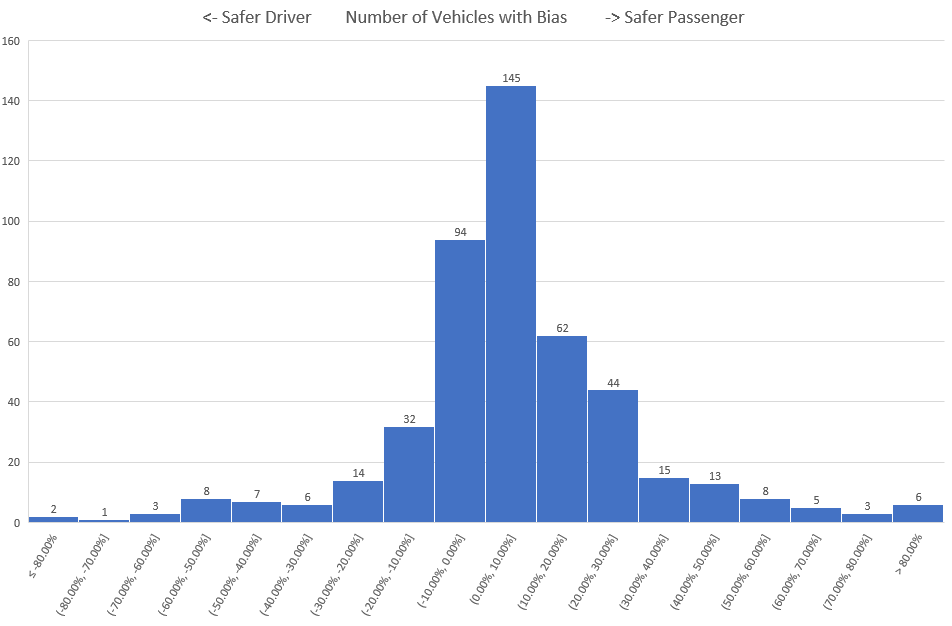NHTSA Crash Testing: Differences between Driver and Passenger Protection

Most older vehicles have some difference in how well they protect their drivers and their passengers – but are there vehicles where the difference is so great that in the same 35 mph front crash, with both occupants wearing seat belts, one would walk away and the other be fatally injured? As it turns out, yes, and this has happened on multiple occasions, with both the driver and passenger being the “lucky” occupant.
For this analysis, I analyzed 468 vehicles crash tested from model years 1979-1994, all vehicles which had valid head and chest injury measurements (so that an accurate calculation of injury risk could be made for each occupant).
Here are the statistics:
-The average difference between the occupants was 16.6%. However, the median difference was only 9.4%, showing that most vehicles had a relatively small difference and that a relatively small number of outliers increased the mean.
-The average risk of severe injury for a driver was 32.8%, and for a passenger, 27.1%.
-156 vehicles (33.3%) were safer for their driver, and 299 (63.8%) for their passenger. The remaining 13 (2.8%) had a difference of 0%. The range was 84% less risk for the driver of a 1990 Chrysler LeBaron than its passenger to 88% less risk for the passenger of a 1985 Dodge Lancer than its driver.
Histograms showing the data distribution are below.

The first histogram shows the differences including the occupant (for instance, 44 vehicles had a risk of between 20-30% lower for their passenger than for their driver) and the second shows the absolute difference (for instance, 144 vehicles had a difference of less than 5% between each occupant).
What are the causes for each of these differences? In the case of the vehicles near the right tail (i.e. passenger much safer than driver), it was often steering column problems, where a vehicle stayed relatively structurally sound but the steering column rotated upwards and/or pushed rearward. Seat belt problems – where a seat belt was strong enough to prevent a passenger from striking the dashboard, but not the driver, given the shorter distance to slow down – also played a role.
As for vehicles where the driver faired better, not surprisingly, in all three vehicles where the difference was 70% or greater, the vehicle was equipped with a driver airbag but not a passenger airbag; this theme played out with many vehicles with moderate differences in favor of the driver as well. In the lesser cases, it may have been due to the driver striking a collapsible steering column in a favorable manner, while a passenger struck the dashboard with severe force.






